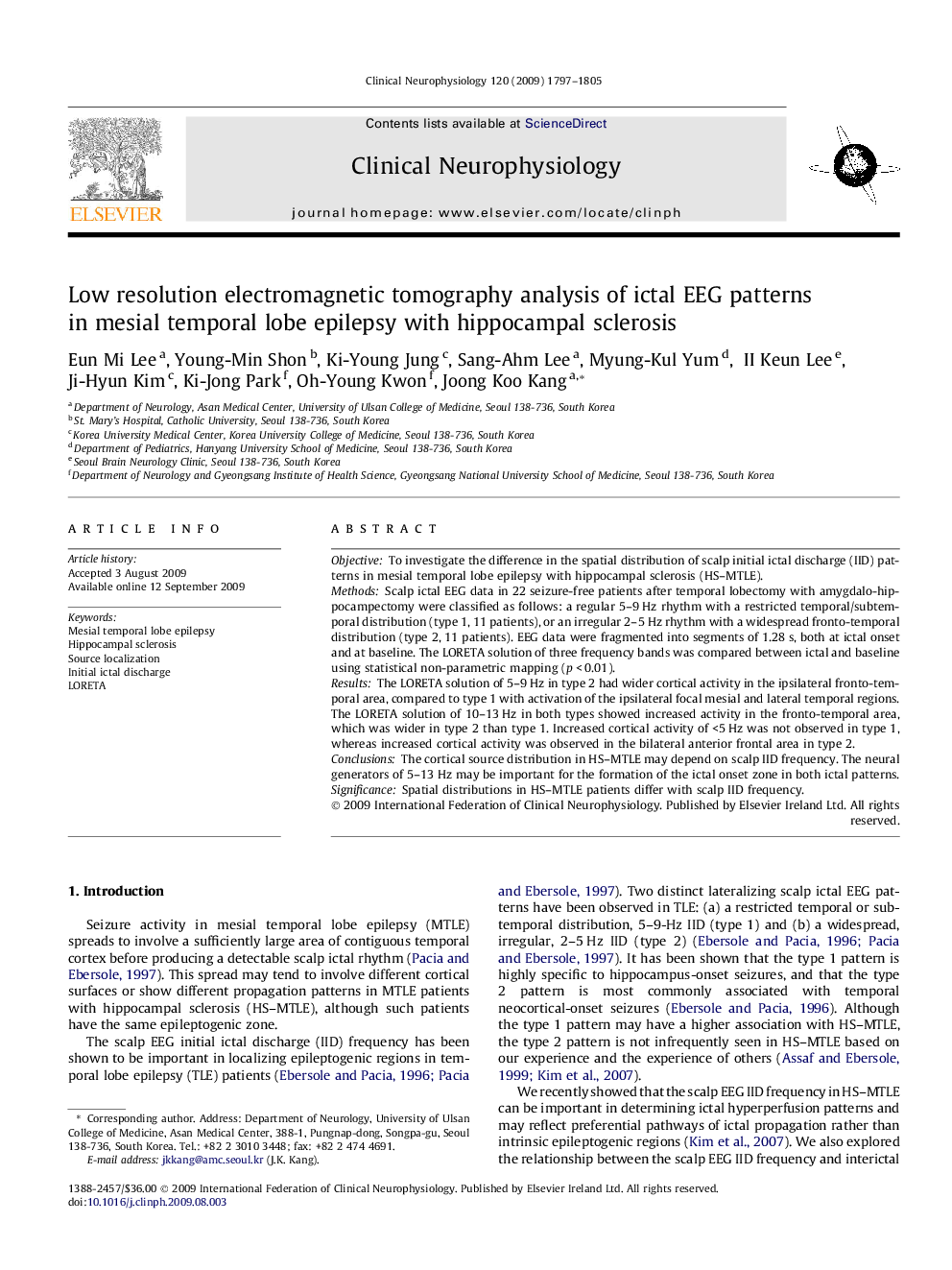| Article ID | Journal | Published Year | Pages | File Type |
|---|---|---|---|---|
| 3046146 | Clinical Neurophysiology | 2009 | 9 Pages |
ObjectiveTo investigate the difference in the spatial distribution of scalp initial ictal discharge (IID) patterns in mesial temporal lobe epilepsy with hippocampal sclerosis (HS–MTLE).MethodsScalp ictal EEG data in 22 seizure-free patients after temporal lobectomy with amygdalo-hippocampectomy were classified as follows: a regular 5–9 Hz rhythm with a restricted temporal/subtemporal distribution (type 1, 11 patients), or an irregular 2–5 Hz rhythm with a widespread fronto-temporal distribution (type 2, 11 patients). EEG data were fragmented into segments of 1.28 s, both at ictal onset and at baseline. The LORETA solution of three frequency bands was compared between ictal and baseline using statistical non-parametric mapping (p < 0.01).ResultsThe LORETA solution of 5–9 Hz in type 2 had wider cortical activity in the ipsilateral fronto-temporal area, compared to type 1 with activation of the ipsilateral focal mesial and lateral temporal regions. The LORETA solution of 10–13 Hz in both types showed increased activity in the fronto-temporal area, which was wider in type 2 than type 1. Increased cortical activity of <5 Hz was not observed in type 1, whereas increased cortical activity was observed in the bilateral anterior frontal area in type 2.ConclusionsThe cortical source distribution in HS–MTLE may depend on scalp IID frequency. The neural generators of 5–13 Hz may be important for the formation of the ictal onset zone in both ictal patterns.SignificanceSpatial distributions in HS–MTLE patients differ with scalp IID frequency.
